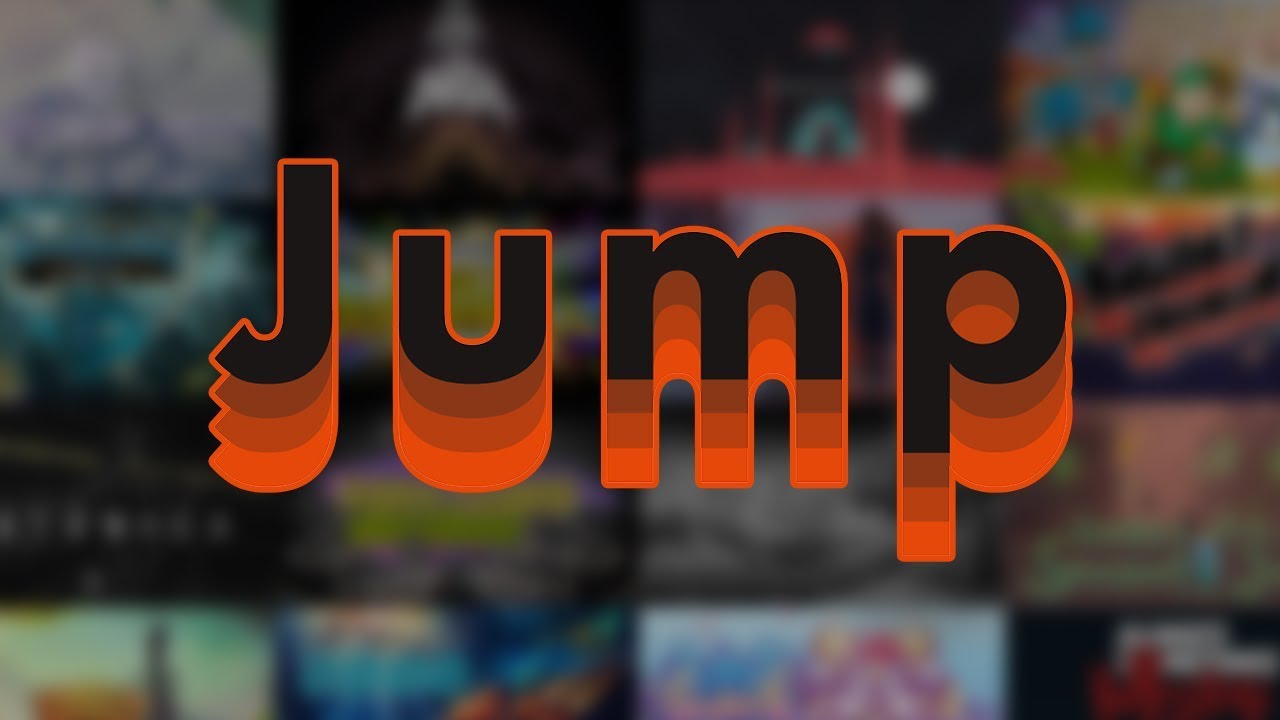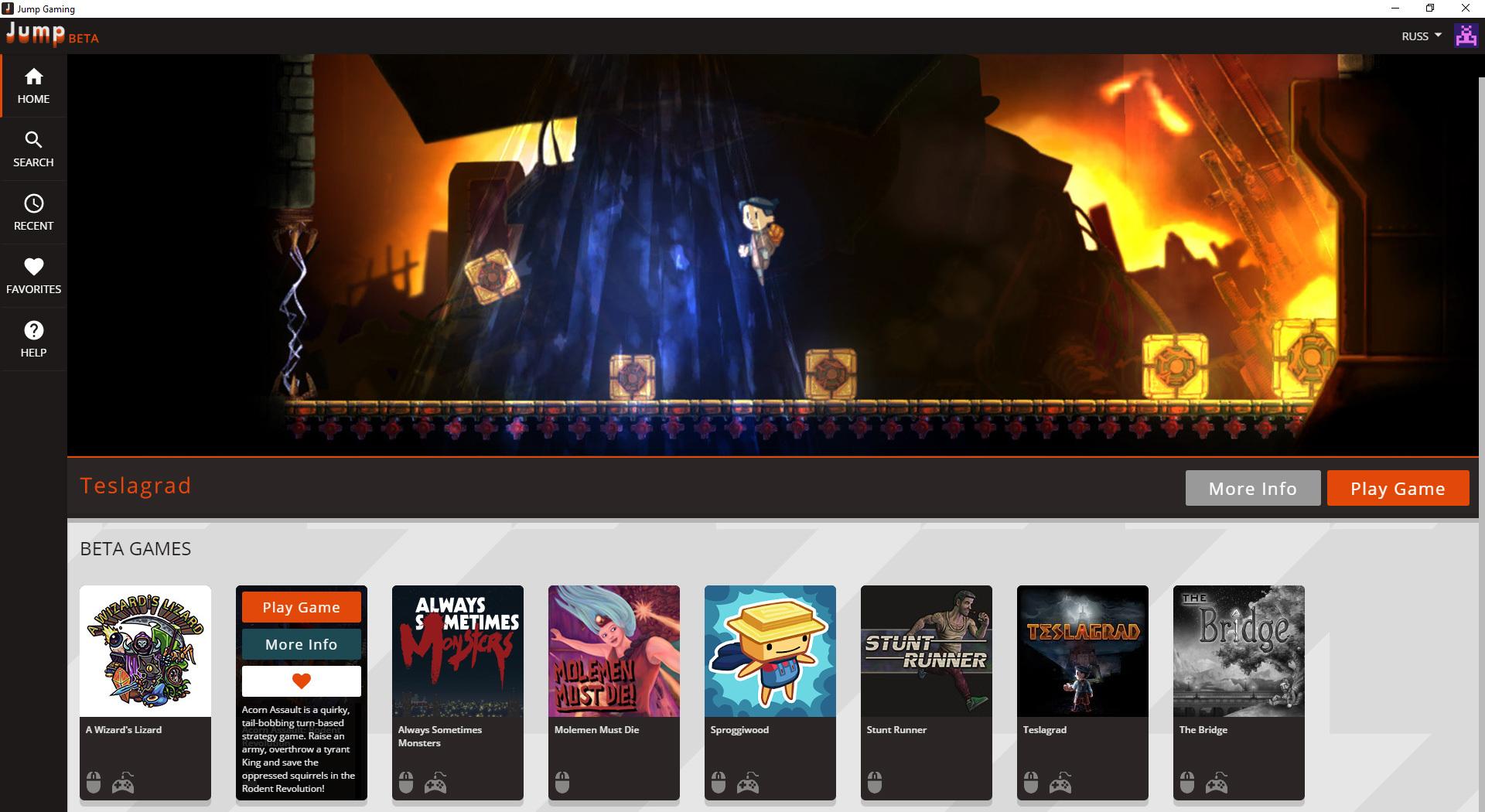After slowly trickling onto the scene a number of years ago, the number of indie games and development studios in the market has exploded in recent years. They’ve changed the way people play, and businesses deliver, video games, and one site in particular aims to improve the delivery of indie games while getting developers the recognition they deserve.
You’d be forgiven if you haven’t heard of Jump yet, since it launched only last month. To find out more about the goals behind the venture, I recently got the chance to speak with Mike Fischer and Anthony Palma, two of the key figures behind the new indie gaming platform, and they spoke about the platform itself, the curating process, and how they believe it fits in the current gaming market.
Background and Origins
Fischer and Palma are no strangers to the gaming industry. After graduating with an economics degree and getting his start “going door-to-door…to developers in Japan,” Fischer has been involved in the business side of companies ranging from Sega to Square Enix USA. Palma received a graduate degree in Entertainment Technology, and after a stint as an Imagineer, tried his hand at starting a small game development studio, but that wasn’t quite working out either.
The commonality in these seemingly disparate backgrounds was the challenge faced by developers in getting their material out in the world. Fischer remarked that he:
“…couldn’t count the times he saw an interesting project with a lot of potential fail to get the green light simply on account of not meeting the AAA marketing expectations of developers and retailers.”
As a developer himself, Palma’s experience was more direct. Particularly in the past ten years or so, he says, it’s “almost impossible” for developers to get their material noticed. Since “the democratization of development” means the industry is full of startup developers.
“We want this to be good for developers financially, but we also want to make this a platform where great games can get discovered…It’s incredibly hard to get discovered now, with the flood of games on mobile, consoles, and especially desktop.”
What is Jump?
That’s where they believe Jump fits in.
Jump is for a specific kind of consumer…the Laggard Gamer. The idea behind it is to benefit consumer and developer by providing a “platform that connects developers to the gamers interested in their games” and also giving gamers a chance to try out something new with little to no risk.
Jump is for a specific kind of consumer…the Laggard Gamer–Anthony Palma
The way Jump works is similar to a streaming platform, almost like the Netflix of video games, but Palma is quick to point out “it’s not streaming.” Streaming involves dodgy connections and lag and is generally inconvenient for the end user. However, the other end of the spectrum—downloading a game fully onto your hard drive—means you quickly run out of space.
Jump is something in between. Using the HyperJump technology developed specifically for the platform, a portion of the game is installed on your computer so you get the same convenience of streaming the game without having to deal with the hassle of lag or space issues.
Jump‘s delivery is designed to benefit gamers and developers alike as well. It’s a curated platform, with games “chosen based on high ratings, industry recognition, or staff recommendations based on their experience playing the game.” It’s meant to filter out shovelware and ensure deserving developers have a chance to get their names and games known, since, as Palma says, industry recognition doesn’t always translate to “the masses” knowing about a game.
Over time, players get a list of recommended games built up based on what they like, and they’re encouraged to try new things too. The subscription fee is a flat $9.99 per month, with no penalties for trying and not liking a game.
Where Does It Fit?
Fischer and Palma say Jump occupies a unique place in the gaming industry. Tools like Unreal Engine and Unity make it exceptionally easy for anyone to make games, and the quality of many of these games merits attention. Despite the huge influx of indie developers, Fischer and Palma don’t believe mainstream, traditional gaming is going anywhere or is in much danger of being diminished. Instead, they see indies as “a creative compliment to big developers,” and Palma says there is the possibility existing of indies correcting negative trends, as fans make their preferences and wants known through supporting smaller developers:
“There’s going to be an interesting struggle over the next five years to make the money back from these AAA games…they are going to have to adapt…to reach their customers, and indie games are pushing AAA developers to think outside the box.”
The complimentary nature of indies is another way Fischer and Palma see Jump fitting in with the industry. According to Palma, “most gamers are likely to make maybe two big game purchases in a year, like Destiny 2 or Breath of the Wild…Jump is for a specific kind of consumer who doesn’t have to buy a game on day one, what we call the Laggard Gamer.”
“I want this to be an ‘and’ situation, not an ‘or'”–Mike Fischer
Indies serve as the perfect way to fill out a gaming library in between those big purchases,” and Jump in particular is a cost effective way of expanding a gaming library without breaking the bank. Rather than the situation between indies and Jump being mutually exclusive, Fischer was keen to say “I want this to be an “and” situation, not an “or”–in other words, an extension of their normal gaming habits that fits into their other platforms and interests, rather than vying for attention.
—
If you’re interested in learning more about Jump, you can check out our review here.
A big thanks to Cindy, Mike, and Anthony for their time!









Published: Oct 27, 2017 04:45 pm